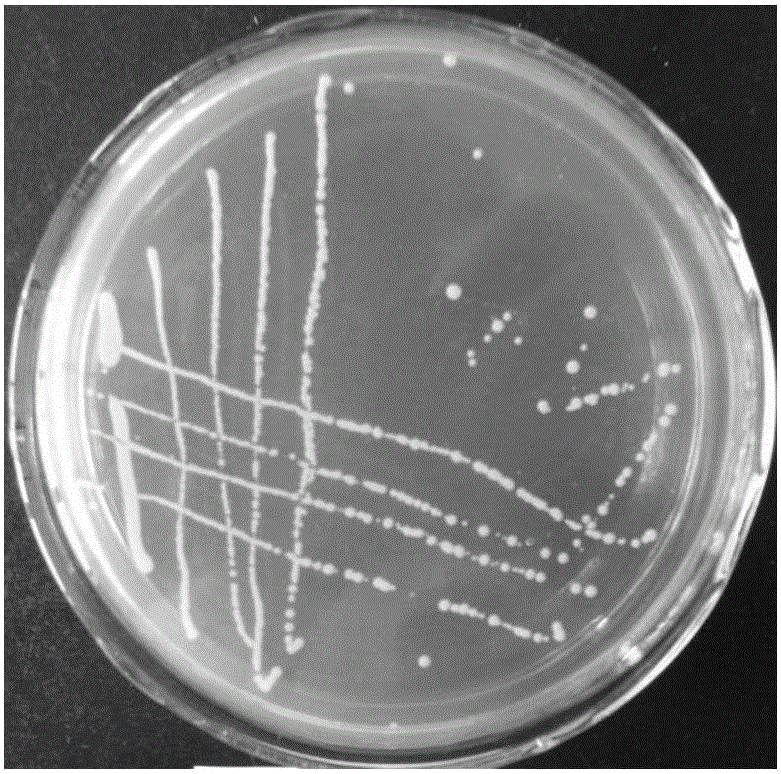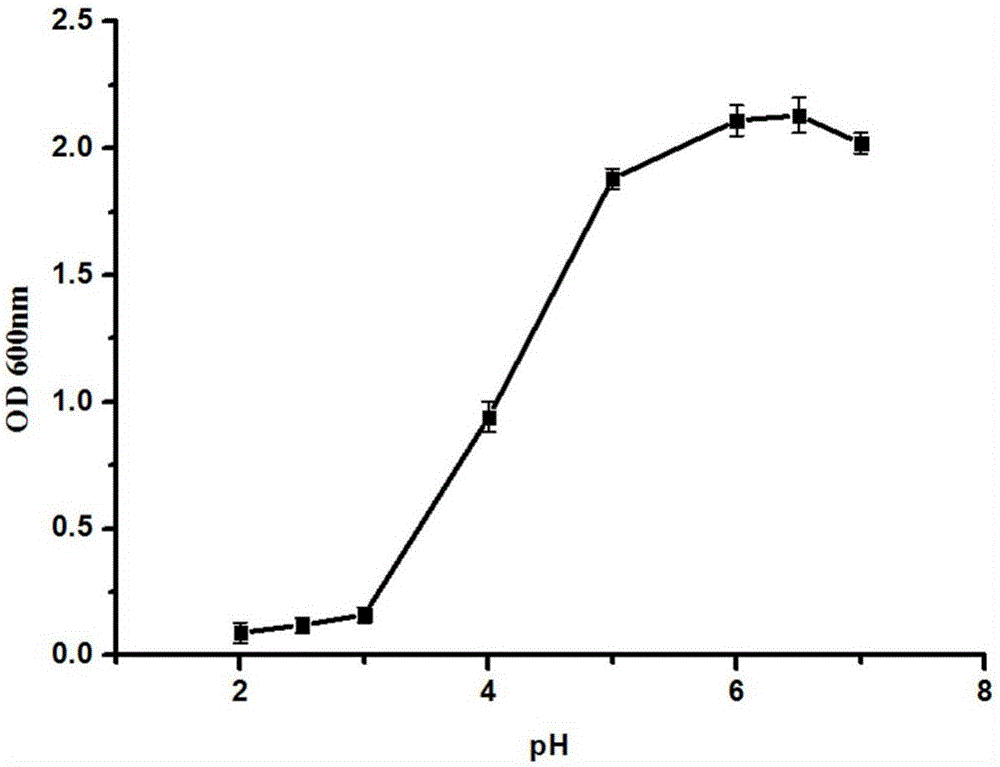Exopolysaccharide-producing pediococcus pentosaceus and application thereof
A technology of Pediococcus pentosaceae and exopolysaccharide, applied in the field of microorganisms, can solve the problem of low yield, achieve strong adhesion, improve antioxidant capacity, and strong tolerance
- Summary
- Abstract
- Description
- Claims
- Application Information
AI Technical Summary
Problems solved by technology
Method used
Image
Examples
Embodiment 1
[0023] Example 1 Screening and Identification of Pediococcus Pentosaceae
[0024] A total of 29 samples of pickle juice were collected in southern Shaanxi, and the strains were screened and isolated. Specific steps are as follows:
[0025] Sample pretreatment: Take 5ml of each sample with a sterilized pipette gun and put them into Erlenmeyer flasks (containing glass beads) filled with 45ml of 0.1% sterile water, shake for 1min, then let stand for 20min, and set aside.
[0026] The pretreated sample is equivalent to the original sample diluted 10 times, and the sample is successively diluted in the same way. Take 0.1mL diluted sample for each dilution, spread it on the MRS solid medium, and keep it at 37°C at a constant temperature. Cultivate for 48 hours, and use a sterile toothpick to pick a single colony that is viscous and has obvious stringiness. Stretch and isolate on MRS solid medium to obtain pure single colonies, and carry out morphological identification, including ...
Embodiment 2
[0030] The influence of embodiment 2pH on the growth of Pediococcus pentosaceae P36 bacterial strain
[0031] Regulate the pH value of MRS liquid medium with HCl (1mol / L) to be 2.0, 2.5, 3.0, 4.0, 5.0, 6.0, 6.5 and 7.0 respectively, get the Pediococcus pentosaceae P36 in the logarithmic growth phase, and use 2% inoculum size Inoculate, mix well and culture at 37°C for 18 hours, measure the absorbance value OD of the bacterial solution at 600nm wavelength 600 . See the growth of Pediococcus pentosaceae P36 in different pH image 3 , the results show that the strain can still grow in the acidic environment of pH2, indicating that it has better acid resistance.
Embodiment 3
[0032] Example 3 Tolerance of Pediococcus pentosaceae P36 to simulated gastrointestinal fluid
[0033] The artificial simulated gastrointestinal juice needs to be freshly prepared. PBS (pH 3.0) was used to configure pepsin at a concentration of 3 g / L, and filtered through a 0.22 μm membrane to prepare the desired simulated gastric juice. PBS (pH 8.0) was used to prepare trypsin at a concentration of 1 g / L, and filtered through a 0.22 μm filter membrane to prepare simulated intestinal fluid.
[0034] Pediococcus pentosaceae P36 was resuspended in normal saline, and its density was adjusted to 1×10 in simulated gastric juice (pH 3.0). 9 CFU / mL, mix thoroughly, and detect the number of viable bacteria after incubating at 37°C for 1, 2 and 3 hours. After 3 hours, take 1ml of the culture solution in the simulated gastric juice (pH 3.0) and add it to 9ml of the simulated intestinal juice (pH 8.0), mix thoroughly, and incubate at 37°C for 2, 4 and 8 hours to detect the number of vi...
PUM
 Login to View More
Login to View More Abstract
Description
Claims
Application Information
 Login to View More
Login to View More - R&D
- Intellectual Property
- Life Sciences
- Materials
- Tech Scout
- Unparalleled Data Quality
- Higher Quality Content
- 60% Fewer Hallucinations
Browse by: Latest US Patents, China's latest patents, Technical Efficacy Thesaurus, Application Domain, Technology Topic, Popular Technical Reports.
© 2025 PatSnap. All rights reserved.Legal|Privacy policy|Modern Slavery Act Transparency Statement|Sitemap|About US| Contact US: help@patsnap.com



